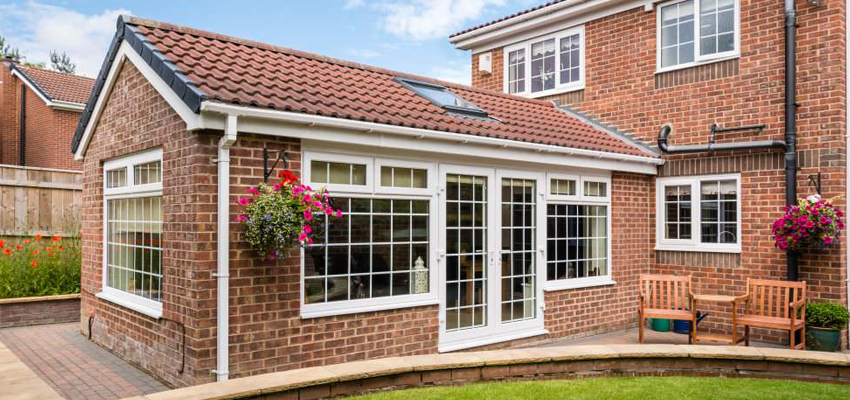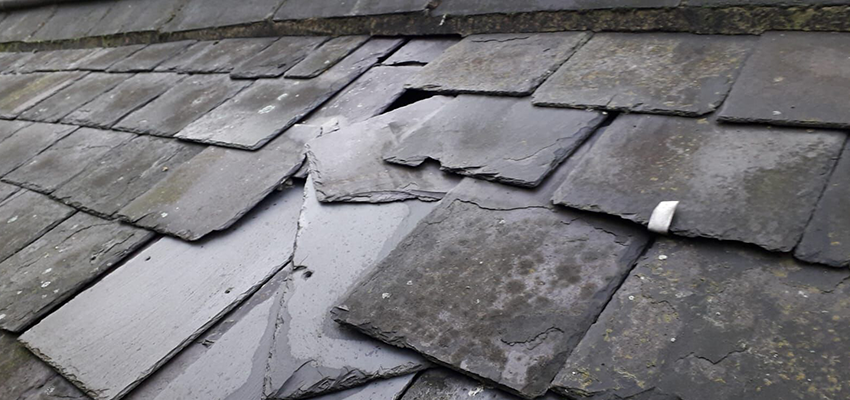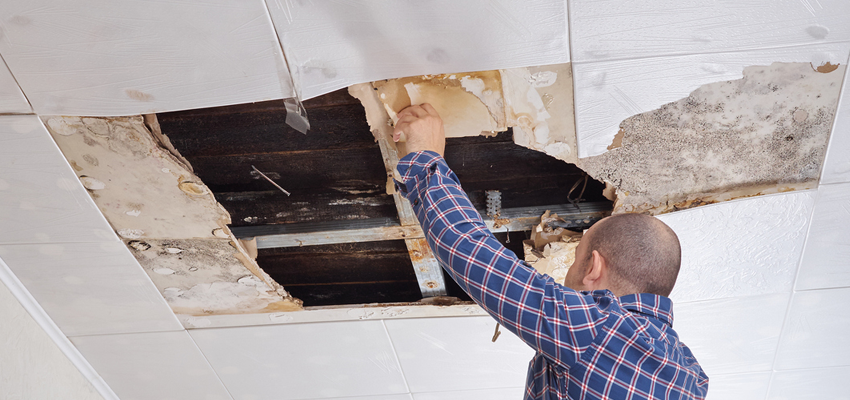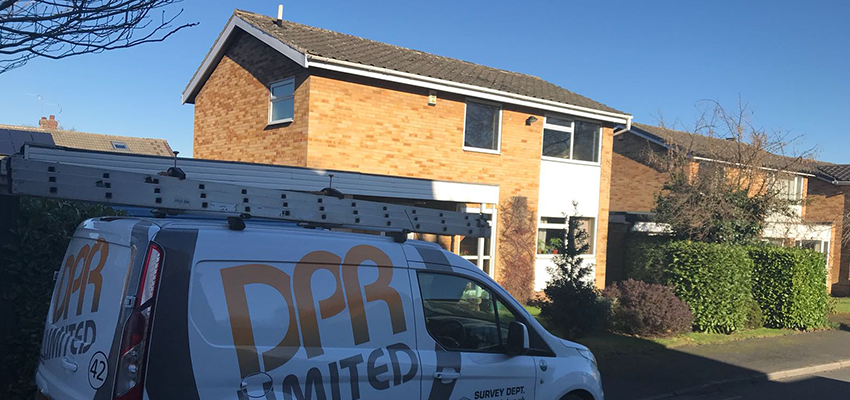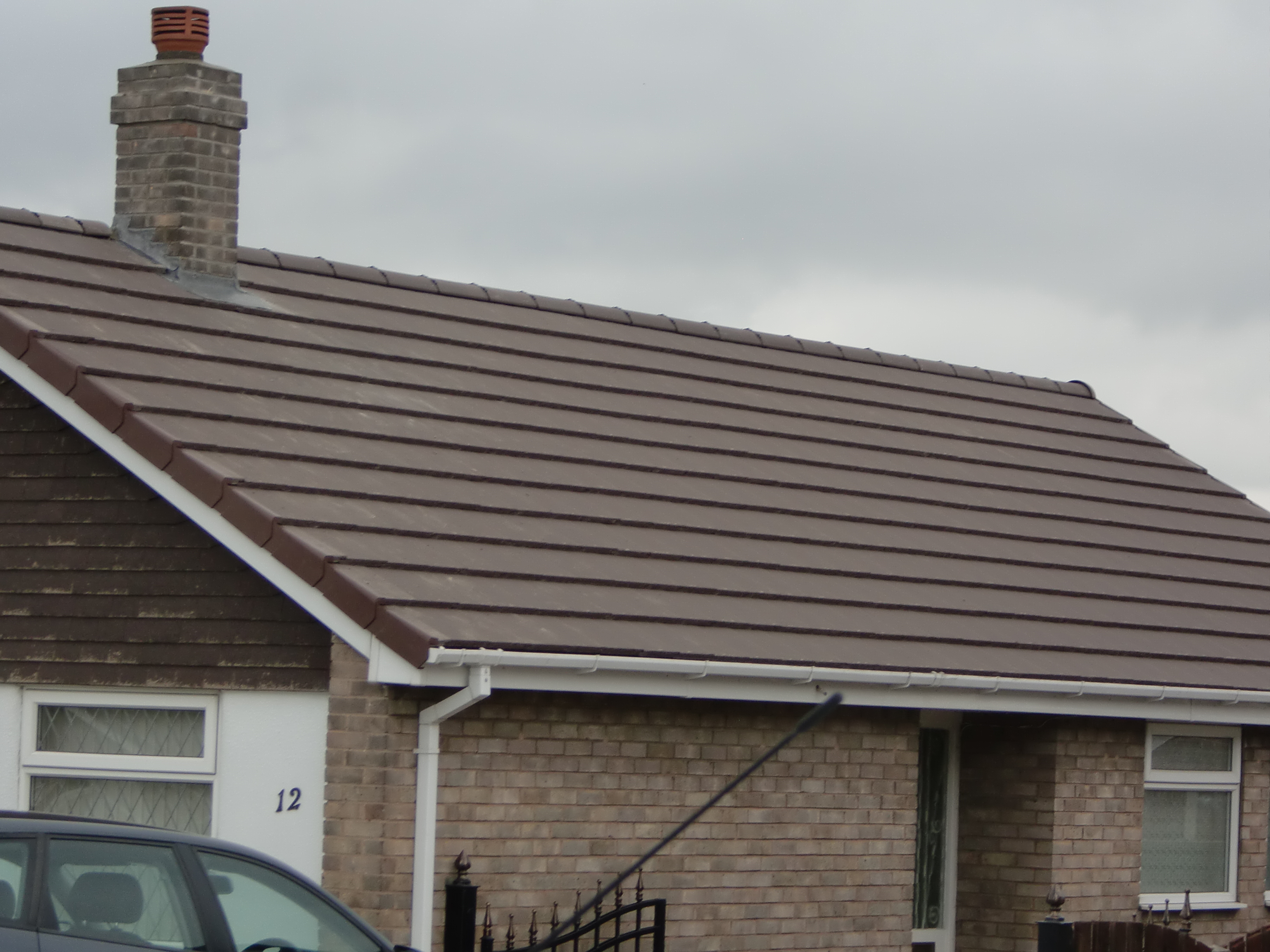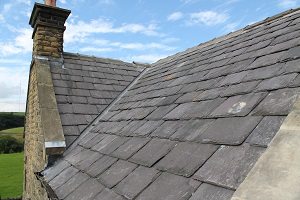What Are the Different Types of Roof Flashing?
Flashing is an essential component of any roof. It protects joints from weather damage, particularly water ingress. As such, it’s important to get it right, using flashing that’s suitable for the needs of the roof and the property. But what options are available? Read on as we look at the different types of flashing and materials that can be used.
Where is flashing used?
First and foremost, it’s important to look at some examples of how roof flashing is used:
- Chimneys – Because chimneys protrude from the structure of the roof, they need flashing around the base to stop water pooling between their bricks and the tiles of the roof.
- Skylights – Similar to chimneys, skylights are a structure which comes out of the roof and requires flashing to protect from water ingress around the edges
- Any joints – As well as these specific examples, flashing is used to protect any joint in the roof. This could be a valley where two roofs meet, or just the edge of a roof where water runs off.
Different types of roof flashing structure
To protect these different areas of the roof, there are a variety of flashing structures that can be used:
- Cap flashing – This sits flat against the roof around fittings like windows. Its ‘L’ shape causes water to run off away from fittings, so it doesn’t pool or make its way into the structure.
- Continuous flashing – Flashing in one continuous piece is known as continuous flashing. It provides optimal protection for joints between a property’s vertical wall and the sloped roof edge.
- Soaker flashing – These are installed on top of and also under roof tiles (dependent on tile/slate finish) where they meet a chimney for example.
- Saddle flashing – Saddle flashing is used to saddle, cover and protect any protruding joists or beams which penetrate through a property’s exterior.
- Step flashing – Like a step, this type of flashing covers both the horizontal surface of a roof with the vertical surface of a fixture.
- Valley flashing – Flashing which is used in the valley of a roof, where two roofs join.
- Vent pipe flashing – This cone-shaped structure is used to cover pipes which protrude from the roof.
Leave it to the experts
Whether it’s flashing, tiling or simply a thorough inspection, you should always get professionals to complete any job on your roof. DPR Roofing in Barnsley have over 29 years’ experience in all aspects of roofing with specialist training across the board. Whatever the job, we can offer a first-class service with top quality results that are clear to see. Get in touch with our team for more information on any of our services or to arrange your free quotation.
What Accreditations Should A Roofing Company Have?
When you’re looking for a roofing company, you want to make sure you can trust them. One way is by checking references, which confirms the quality of their work in the past. But arguably more important are accreditations. These provide a clear indication of whether roofing companies are as reputable, qualified and experienced as they may claim to be. Read on as we look at some of the essential accreditations for roofing companies.
- CORC (Confederation of Roofing Contractors) – Members are considered the best I the business with the CRC providing a fully insured back up guarantee.
- FMB (Federation of Master Builders) – The largest building trade association in the UK. Strict membership criteria, a rigorous vetting process and regular inspections means members are specialists in their trade.
- NRWB (National Register of Warranted Builders) – Also known as FMB insurance, membership means a roofing company is insured and can provide a dependable warranty for any work on your property.
- PCA (Property Care Association) – Members are property care specialists who can effectively resolve a range of property defects.
- TrustMark – A government endorsed scheme that applies to trades involving work on homes. It helps homeowners choose reputable traders by thoroughly vetting and inspecting firms for their trading practices, customer service and technical competence.
Can we help?
Based in Barnsley, DPR Roofing is a roofing company you can trust. We are accredited by all of the groups and schemes listed above, meaning we can provide you with a dependable service that effectively resolves your roofing issues. From new roofs and roof replacements to one-off repairs and guttering, get in touch to see how we can help you.
When Do I Need a New Roof for A House Extension?
A strong, well-maintained roof is essential to keep your property protected throughout the year. While most people keep on top of their property’s main roof, it’s easy to forget about the extension. How often should you have your extension roof checked? What kind of problems are common? And do you need a new roof for your extension? Read on as we explore extension roofing.
Extending your home
With the cost of moving home rising, it’s no wonder more and more homeowners are choosing to extend their property to get the extra space they need. When doing so, the roof is an important consideration. Like with other parts of your home, it will protect your extension from the elements – whether that’s rain, snow or debris like leaves.
Types of extension roof
Homeowners can choose between a flat or pitched roof for their extension. Flat roofs are cheaper than pitched roofs and quicker to install. However, they do require replacing more and don’t match the appearance of the rest of your home – unless the rest of your home has a flat roof too which is pretty rare in the UK. In contrast, pitched roofs add an element of style to your extension. They match the rest of your roof and improve the appearance of your home overall. However, they do cost more and take a bit longer to install. If your roof is due a replacement, it could be the ideal time to change from a flat roof to pitched roof. This will add to the value of your property and mean you don’t need to replace it for several decades. (Planning consent may be needed)
New roof for your extension
The type of roof on your extension is central in how often it needs work. A flat-roofed extension will typically need replacing every ten years or so but can be much longer if it’s a modern roof such as GRP. You might also need occasional repairs on the flat roof, depending on the quality of the installation. If your extension roof is pitched, however, it can last around up to 100 years, or even longer if quality materials were used. Materials like slate could last upwards of 100 years if they’re well-installed and properly maintained. Homeowners who have had their own extension constructed will know when their roof was installed – and can use this to calculate when it should be replaced. However, in many cases your extension will have been in place when you purchased the property. If this is the case, you can search by postcode online to find when planning permission was granted for the extension. A lot of extensions don’t require planning permissions, however, because they are classed as a permitted development. It might be worth having the roof inspected to assess its condition.
Start with a survey
Sometimes your roof can be repaired to save money, while in other scenarios you’ll be better off in the long run by getting a new roof for your extension. In any case, a thorough survey is the best way to get an idea of the state of your roof. At DPR Roofing, we provide expert inspections, repairs and roof replacements for properties across Barnsley. Get in touch today to arrange your survey and quote.
Does My Roof Need Replacing or Repairing?
So, your roof is damaged. You’ve decided it definitely needs some work. But should you have it repaired, or does it need to be completely replaced? There are a few factors to consider, which can help you decide which option is most suitable for you and your roof. Read on as we explore whether you should repair or replace.
Why does it matter?
You might think there’s not much difference between repairs and replacements. After all, they do the same job, right? Wrong. For some problems, repairs are just a quick fix and may not tackle the root of the problem. They will only solve your problem in the short term, or might not solve it at all. This means you could end up spending more and more on further repairs over the coming months or years. Conversely, replacements may be unnecessary for some issues. Smaller problems can often be repaired with no problems. If you get a full-blown replacement whenever a small issue crops up, you’ll find yourself spending large sums of money unnecessarily. This leads us on to one of the factors to consider when you’re choosing between repairs and replacement…
How much will it cost?
Money is usually the first thing people think when their roof is damaged. And quite rightly too. It’s no use planning a full-scale tear-off if you can’t afford it. If a full replacement is out of your budget, it’s a good idea to get the problems repaired for the time being.
Does it need fixing urgently?
Time is another factor which sometimes you just can’t avoid. Damage can come at the worst times, and leave your property in desperate need of work. That urgency can help you decide between repairing and replacing your roof. While a replacement can take much longer, repairs offer a quick solution to things like leaks.
Is it a recurring problem?
As discussed, repairing a long-term problem could see you paying for repairs again and again. Your roof might constantly be losing tiles or leaking, for instance. While these problems are repairable as a one-off, their recurrence is usually a sign that a replacement is needed.
Is style an issue?
Some roofs use specialist tiles, making a full replacement less practical. Period properties, for instance, may have heritage tiles that are essential to maintaining their style. This is even more important for listed properties. Because they’re protected, any major changes, like roof replacements, are prohibited without permission.
How old is your roof?
The age of your roof can also distinguish whether a replacement is necessary. Roofs generally have a lifespan of over a decade, with some even lasting a lifetime. With that in mind, your roof shouldn’t need replacing if you’ve recently had it installed – unless it has sustained serious damage. In contrast, roofs that are over 20 years old are definite contenders for replacement – especially if the roof is still under warranty.
Speak to the experts
Even with this advice, it can be hard to choose between repairs and a roof replacement. So, what’s the best solution? Speak to the team at DPR Roofing in Barnsley. We’re experts in roofing, with over 28 years’ experience in every aspect of roofing. We’ve seen every problem there is to see and are best placed to advise you on your roof’s needs. Get in touch today to organise your free, no obligation survey and quote.
What To Look For In A Roof When Buying A Home
Choosing a new home can be an extremely exciting time. Whilst it’s important that you’re happy with all the customary things you usually look for in a new house, such a room numbers, size, garden facilities- it’s important that you don’t overlook the roof.
Picking your dream home, only to be dismayed when you find out the roof is in poor condition, can completely ruin your experience and can also end up costing large sums of money in repairs and renovations. To prevent this happening to you, follow our guide on what to look for in a roof when buying your new home.
Age
One of the first things you should consider when you’re viewing a new house is the age of its roof. If you’re looking at a relatively new property, then it’s unlikely that you’ll need to make any repairs to the roof but if you’re viewing a property that’s on the older end of the spectrum it’s vital that you ask questions about its condition.
Has the roof undergone any maintenance since it was built? If not, you’ll probably need to make some yourself, so ensure that you inspect the roof very carefully during your viewing.
Gutters and drainage
Gutters are one of the most important parts of a roof, and as such, you should aim to make sure any home you look at has a fully-functioning gutter. Are there any cracks? Does the gutter appear to be clogged? Is the gutter at a steep enough incline to allow water to run down it efficiently? A faulty gutter and drainage system can cause leaks on your roof which can cost thousands, so be vigilant!
Ventilation system
Critical to a roof’s performance and longevity is its ventilation system. If a roof isn’t properly ventilated it may become too warm during summer; lofts can become extremely hot, and this can result in heat damage to the roof’s interior.
Wear and tear
General wear and tear such as cracked or chipped tiles occur on all roofs and generally won’t cost huge amounts to replace in minor cases. However, you should still aim to complete renovations as soon as possible to prevent leaks causing your new home water damage in the future.
Signs of water damage and mould
Keep a keen eye out when checking the interior roof of any property you visit. If you notice any mould or signs of water damage such as dark patches, it’s highly likely that the roof already has a leak somewhere. This can mean an expensive repair bill or, in severe cases, a weakened roof structure due to prolonged exposure to leaks.
Need more help?
For expert help and advice on roofing speak to our friendly team today
Roofing: What Can Go Wrong?
There are many parts of a building that will suffer from ageing and damage over time, resulting in the need for repairs or replacements. Given it will be acting as a first line of defence, it’s perhaps not surprising that roofing issues are by far the biggest area of insurance and warranty claims. Whether it’s accidental or just a matter of wear and tear, these are some of the common problems that can arise with damaged roofs.
Water damage
Damage caused by excessive amounts of water is a common problem. If your roof has weak points, or has not been efficiently weather-proofed, water can seep through cracks and make its way into the interior of your loft. Depending on the nature and severity of the leak, the water damage caused can lead to further repair costs. If left unnoticed for too long, it can cause serious structural damage and drastically reduce the integrity of your roofs support beams. It can also result in damages to the interior of your house and your personal possessions.
Devaluing
If you’re planning on selling your property or you’re hoping to rent out your second home, the state of the roof can have a big impact on its value. An old roof in need of replacement will not only function poorly, but will also look bad. If you have damages that have been left unfixed or issues that could potentially lead to problems further down the line, it will make it much harder to find a willing buyer. Maintaining a well-kept roof is an essential part of maximising the value of your property and ensuring that you get the most out of your investment.
Health issues
Many people don’t realise this, but roofs play a big part in the heat distribution and airflow within a house. As hot air travels upwards, it will escape through the roof. This means that if you don’t have efficient ventilation in your loft, you may suffer from a build-up of moisture which will result in issues such as damp and mould. These can have a terrible effect on your health and can cause respiratory issues, particularly in young children.
Fire risk
If your roof is insufficiently protected against the elements, there’s a real risk that water may find its way to the inside of your house and come in contact with live electrical components. For example, many homes rely on electricity that comes in from the side of the house, or is roof-channelled into the panel box.
If this were to happen, the resulting fire could cause huge amounts of damage and potentially harm you or your family. Luckily, there are many ways, including regular roof maintenance checks, that should be carried out to prevent this.
Need more help?
For expert help and advice on roofing maintenance speak to our friendly team today on 01226 670 008
Case Study - How to Get Repairs Done Quickly
When roofing fails to do its job, it’s not uncommon for homeowners to find water leaking into their property. But in many cases, they don’t know where it’s coming from. It’s the job of expert roofers to find the source of the water and how to rectify it. That’s exactly what we did on a recent job, where the homeowner couldn’t find the cause of their leak. Read on to see how we helped a customer in Barnsley with their leaking roof.
A long-standing problem
We were initially contacted by Mr Bradley in May 2018. He was struggling with a leak in his property – and has been for some time. Essentially, water was leaking in through the conservatory roof. It was a long-standing problem, which was proving difficult to solve. And, unfortunately, the client couldn’t pinpoint the exact cause of the leak.
The importance of finding the root cause
With any leak, it’s important to tackle the root of the problem. Quick fixes may stop water getting onto your furniture or dripping onto the floor, for instance. But water may still be penetrating the roof. This can lead to further damage you have not yet seen– both to your property and your roof. The first step is figuring out where exactly the water is coming from. Only then can a solution be put in place to fix things. On a survey of the property in Barnsley, our team was able to pinpoint the source of the leak exactly. While the owner thought damage to the tiled roof covering was at fault, we determined that the coping stones were the source of water entry. Water was entering through inadequate pointing and mortar on the stones, then getting into the cavity beneath them. Using this, we could put forward a long-lasting fix for the roof.
Providing a long-lasting solution
We stripped off the coping stones from the perimeter of the roof. Once we had sealed the cavity beneath them using torch-on roofing felt, we re-set the coping stones on a mortar bed and pointed them off, ensuring they were level and secure. To make sure all bases were covered, and the existing damage to the roof surface didn’t develop, we also re-covered the roof with strong GRP (fibreglass). This will provide a resilient, waterproof covering for the roof and protect it from any water ingress or wear and tear in the future. The job was finished within 2 days, so there was minimal disruption to the homeowner.
Arrange your inspection today
With over 29 years’ experience in roofing, the team at DPR Roofing in Barnsley are well-equipped to deal with any roofing issues. If you’ve got a problem, whether it’s a leak, missing tiles or damaged guttering, we can propose a long-lasting solution with zero obligation. Get in touch today to arrange your inspection and quote.
How much will a replacement roof cost?
Are you looking to replace the roof on your property? Obviously, this is a significant project to undertake but what is the going rate for this type of work?
If your roof is beyond repair, then one of the first things you will want to know is how much it will cost to replace. To help give you some guidance, we’ve created the following article outlining roughly what you can expect to pay for a new roof.
What does the average roof cost?
Naturally, this figure will vary drastically depending on how big your home is, the size of your roof and what materials your replacement will be made of but, as it stands, the average cost for a replacement tiled roof in the UK is just under £5000.
But where does this number come from?
Labour
Again, this figure will vary depending on who you hire, but the average cost of a labourer and a roofer is around £250 - £300 a day. Although you may be able to find people who will do the job cheaper, we always recommend that the company you choose are experienced and have a good reputation. Remember that if someone is doing the job ‘on the side’ then most likely the materials will be inferior or even stolen from their company place of work. Also you really do not stand anywhere with a guarantee for a job done ‘on the cheap’.
Picking a cheaper roofer might save you money initially but if the job isn’t completed to the correct standard, it can cost you much more in repairs in the long run. ‘Quality is remembered long after the price is forgotten’.
Scaffolding
In many cases, scaffolding is an unavoidable expense for your roofing replacement process. Again, the cost for this depends on the size of your property but will generally cost around £800-£900 for a 3-bed semi-detached house.
Materials
The materials you use can have a moderate impact on your total re-roofing spend. For example, the total cost of a roof replacement using plain tiles will cost between £8,000 - £12,000 for a four-bedroom semi-detached house, whereas the same replacement using slate will cost between £7,000 - £10,000. It’s also important to remember that whatever materials you use, smaller tiles will take much more time to install, and therefore cost more in terms of labour costs.
Skip hire
Another thing that you may not initially think of when considering your roof replacement spend is the cost of hiring a skip. The average cost for a 6-yard skip is £184, and the price of an 8-yard skip is around £216.
Extras
As you’d imagine, any extras that you include in your roof replacement will increase the cost of your total bill. This can include things such as new guttering, repointing a chimney, installing roof tile vents and roof windows etc. The extras you need will depend on your property but the roofing company you choose will be able to advise you on the extras that it is worthwhile to invest in and how much these will cost.
Need more help? For expert help and advice or for a more accurate quote for your roof replacement speak to our friendly team today
How To Prepare for Heavy Rain
For the past few weeks in Yorkshire we have been experiencing come quite interesting weather and by interesting we mean it has been raining, a lot. This extra, unexpected downfall will have placed an incredible amount of strain on your home or commercial property. Out of all the parts that make up your home, the roof will have taken the biggest beating.
Thankfully, there are a couple of things you can do to your roof to make sure that it can withstand this abuse:
1. Clean your gutters! This is good advice for general roof maintenance, but it becomes doubly important when we are experiencing turbulent weather like we are now. The purpose of gutters is to catch and control water as soon as possible, and guide it to the rain drains under our streets. When the gutters are blocked or damaged water will simply pour out and spill where it should not. Water, when uncontrolled can be extremely damaging.
2. Repair any small issues. Small issues, such as a loose or missing tile, may be able to withstand every day weather, but as soon as things get more extreme they quickly become a burden, and will quite easily snowball into something much more dramatic. Thankfully, as roofs are quite uniform in nature these kinds of issues are easy to spot. Simply stand across the street and look at your roof, if something is out of place then it should be quite clear.
3. Make sure your roof is clear. Any sort of debris on your roof will inhibit its proper function. Water will not drain as fast and your roof will be under extra burden. This is even more of an issue if you have vegetation, such as moss, on your roof. In this case the roof is already under strain from the added weight of the moss, then saturate it with water and the stress will be even greater.
If you are experiencing any of the above issues and are worried your roof will not be able to withstand the coming weather then just call DPR. We have been repairing and replacing roofs in Leeds and the surrounding areas, as well as Yorkshire as whole for nearly 3 decades and can help with any of the above issues and much more. To find out how just call us on 0113 335 0043.
4 Common Problems With Roofs
As roofs get older and more exposed to the elements they can become susceptible to a number of different issues. Here are four of the most common problems that can occur. If you are not sure about the cause or don’t feel confident carrying out any repairs yourself it’s best to contact a professional roofing company, such as DPR.



